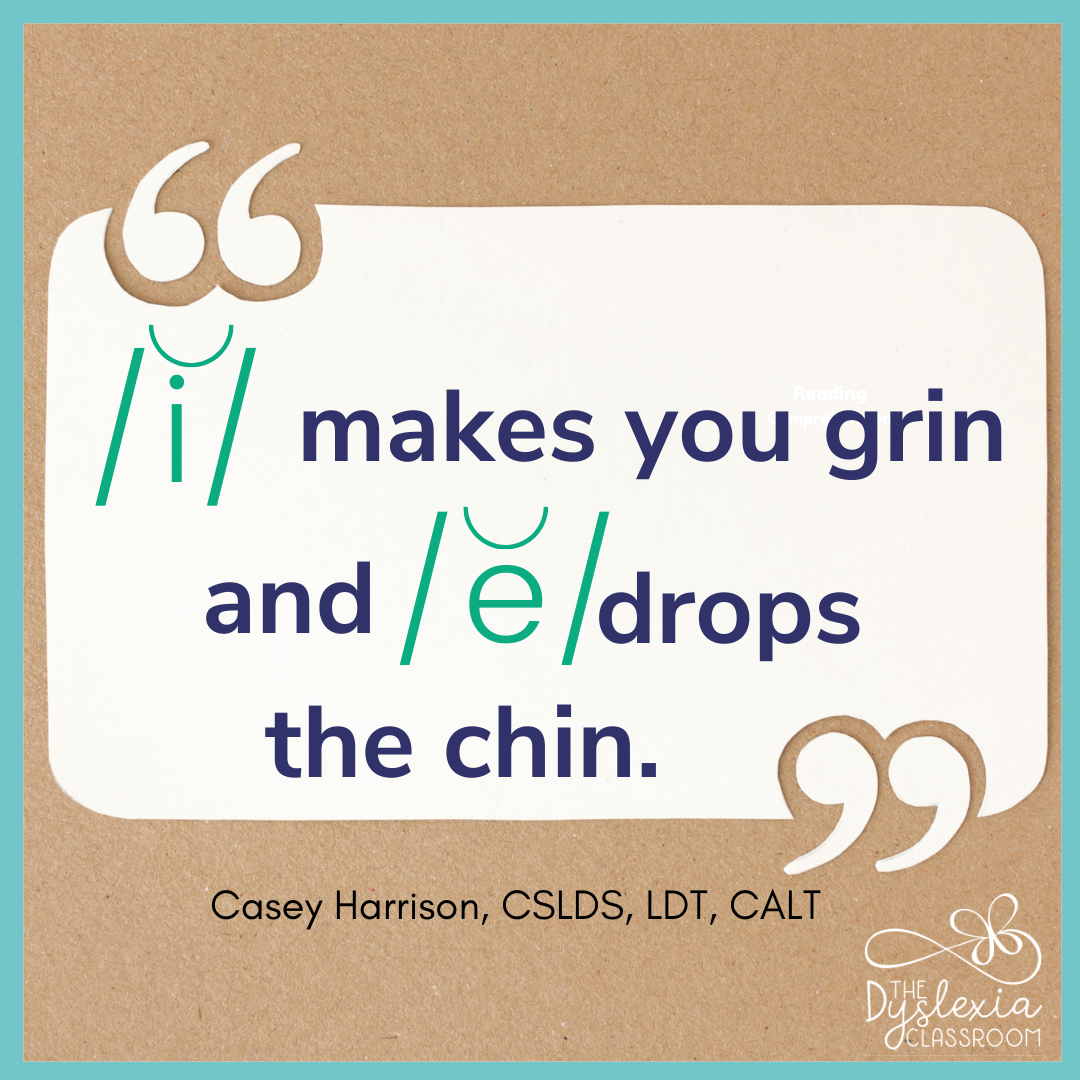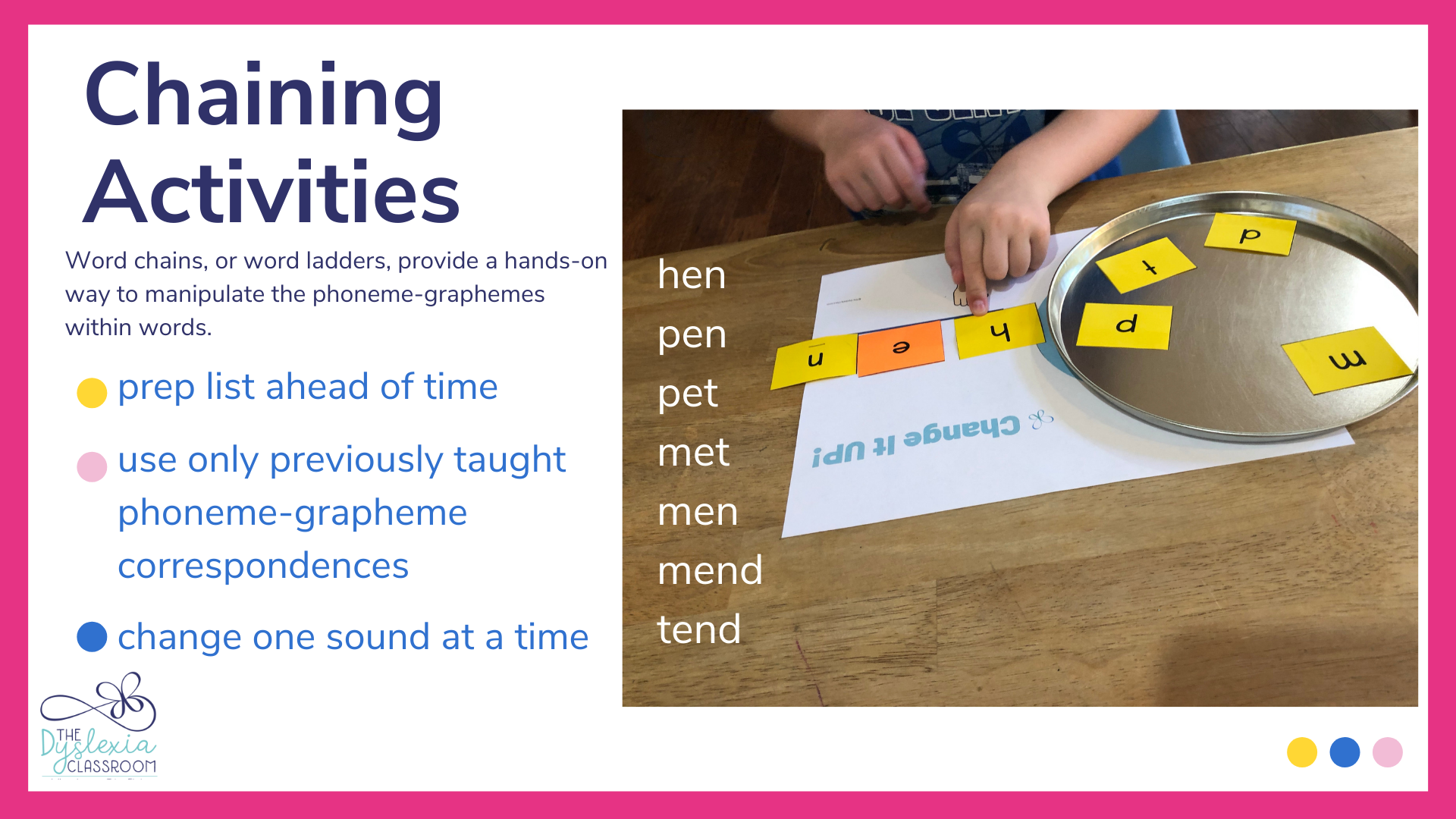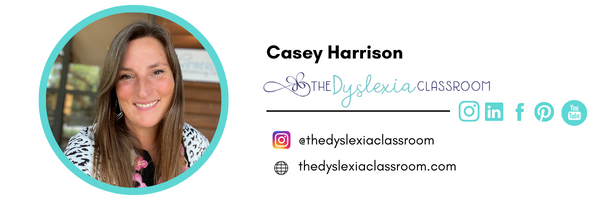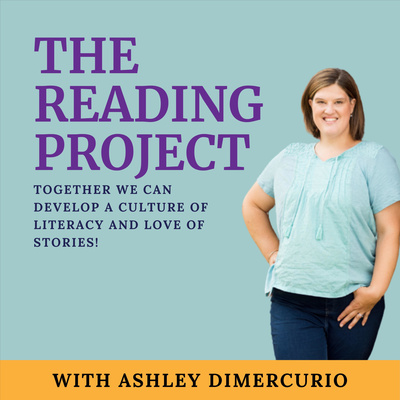Top Tips for Clearing Up Sound Confusions
Is it Short e or Short i?
Hi, friends. Sound discrimination can be tricky for some students, especially the short e and short i sounds. Many children will confuse these two vowel sounds in phonology work, reading, spelling, and sometimes running speech. Some students may also struggle with phonological processing, have speech sound errors, sound substitutions, omit sounds, add sounds, or distort sounds. If this is the case for your students, keep reading. This week, I'm chatting about how explicitly teaching articulatory gestures or mouth placement is key.
Why Teaching Mouth Placement is Important
Individual phoneme production is an integral part of reading and spelling instruction. Students need to be able to isolate phonemes to segment. The skill of segmenting is the ability to take apart individual phonemes, sounds, within words. Think of these as the parking spots for the letters that represent these sounds.
When we help students identify the placement of their mouth for individual sound production, we create a connection between what we are hearing and how that sound feels in our mouth.
What Should We Do?
When we introduce students to phonemes, sounds, we want to use a speech-to-print approach. When we begin with the individual sound production, we activate our students' phonological processing. These articulatory features for speech sounds lay the foundation for our knowledge of graphemes.
Explicitly Teach Mouth Formation
Using a mirror to identify the place of articulation, where the sound comes from within our mouth (front, middle, or back of), the manner of articulation (what are the teeth, lips, and tongue doing), and the use of voice or unvoiced sound production strengthens phonological awareness. These mouth formation cues are essential for anchoring sounds to letter representations, especially for struggling readers.
Teaching Tips

Short e/i is a common sound confusion for many students. I like to tell my students that "/i/ makes you grin and /e/ drops the chin." This is a catchy saying that is easy to use and brings awareness back to the mouth formation. I made the video clip above 👆 to show how I use mouth formation to differentiate between sounds.
Instructional Activities to Build Short e/i Application
Once we explicitly introduce short e and short i, we want to follow up with many activities where students identify the sounds in isolation, phonemic awareness tasks, within words, and reading and spelling tasks.
⭐️ Mirror work. Have students use a mirror to note the formation of their mouth when they say the short i sound. Note the smile shape of our mouth. Have students identify if their voice is on or off. When our voice is on, we feel the vibrations in our voice box. All vowel sounds are made with an open mouth and our voice on. Do the same procedure for the short e sound. (watch the video clip for details)
✨Students can compare the shape of their mouth for the short i/e sound. Remember my little rhyme, "/i/ makes you grin and /e/ drops the chin." I've created a poster for you to use that will assist you with this activity. Grab your FREEBIE HERE by signing up for The FREE Dyslexia Classroom Resource Library! 😊
⭐️ Choose keywords that elicit clear sound production. Keywords are a helpful tool for linking phonemes to graphemes. They act as a bridge between the sound we hear and the letter representation. Some keywords are better than others in providing a clear sound production. For short i, choosing a keyword such as icky, igloo, or itch all produce a clear /i/ sound. Often when we have a nasal (/m/, /n/, /ng/) the sound can be distorted. For short e, a keyword such as edge and echo helps produce a clear sound production.
⭐️ Identify the target sounds within words. (focus on the short e/i sounds) You can use picture cards, orally state words and have students give thumbs up/down or hold up the letter e/i, create sound bags with the short e/i, etc.
⭐️ Sorting games. Keeping the focus on the targeted sounds of short i and short e, you can have students sort pictures, word cards, etc. Students can underline or highlight the vowel as they read the words and sort them accordingly.
This sorting game👆 is an easy way for students to practice sound discrimination. Click the image to read more about it. You can grab these mouth formation cards in the shop. 65 mouth cards with images on the front and teacher tips and directions on the back! I've found them to be especially helpful with virtual learning and when wearing masks.
Moving Knowledge Beyond Phoneme Isolation Tasks
Once students can correctly isolate individual phonemes, we can blend the sounds back together to form words (reading), take a word apart into individual sounds and link those sounds to the written representations (encoding/spelling), and apply the phoneme segmentation to advanced phonemic awareness (Say: smile, now say smile but don't say /s/. What's left? mile)

⭐️ Word chaining with short e/i. Word chains, also called word ladders, are an effective way for students to apply their knowledge of phoneme-grapheme correspondences. They provide a hands-on way to manipulate the phoneme-graphemes within words.
For example, have students pull the following letter tiles: e, i, p, t, n, b
Say: make "in" (students build the word)
Add /p/ to the initial position. The new word is? pin
Change the /i/ to /e/. What's the new word? pen
Change the /p/ to /t/. The new word is? ten
Change the /e/ to /i/. The new word is? tin
Continue: tin-bin-ben-bet-bit-pit-pet-pen-pin
Phoneme manipulation tasks within word chains need to be prepared ahead of time. You want to ensure that students use previously taught phoneme-grapheme representations and that the shift in words occurs one sound at a time.
As you can see, mouth formation is a key component of helping students differentiate between the short e and short i sounds. I would love to hear how this strategy works for you. If you liked the video clip, let me know! I have a few others on my Instagram and YouTube Channel.
If you are wondering how sound/speech production helps with spelling, I recently spoke with Ashly on The Reading Project Podcast. You can catch it here.
I hope that these tips help you with troubleshooting errors in sound production. Don't forget to grab your freebie poster.
Have a great week!
Casey

This information is the intellectual property of @2016 The Dyslexia Classroom®. Do not use or repurpose without expressed permission from The Dyslexia Classroom®. Please email [email protected] for permission, and give The Dyslexia Classroom® an attribution if you use, reference, or quote/paraphrase copyrighted materials. This includes but is not limited to blogs, social media, and resources.






